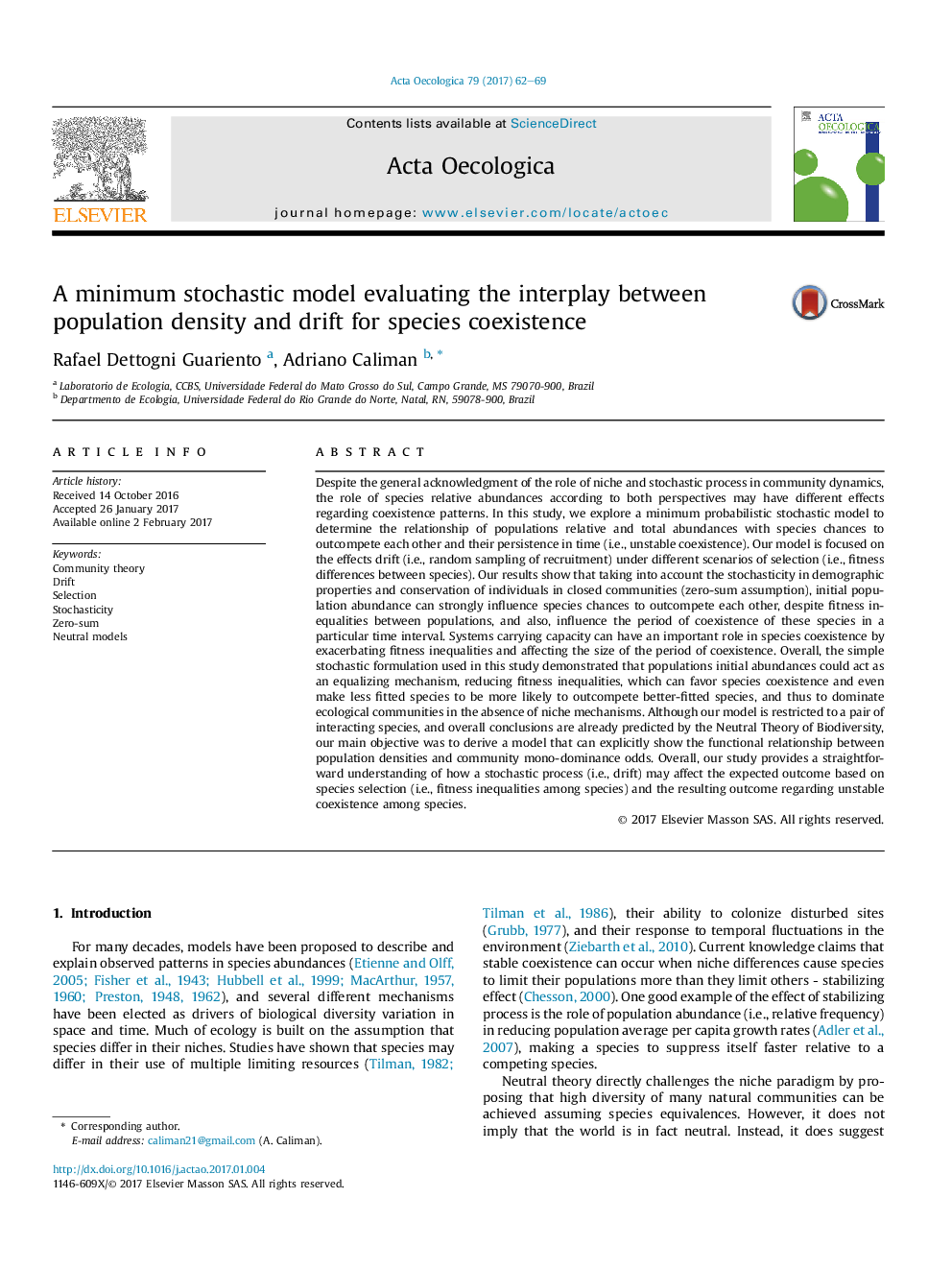| Article ID | Journal | Published Year | Pages | File Type |
|---|---|---|---|---|
| 5742518 | Acta Oecologica | 2017 | 8 Pages |
â¢A minimum stochastic model dealing with species drift and coexistence is proposed.â¢Coexistence among two species is evaluated under distinct selection scenarios.â¢The chances of a species outcompete others is a function of its relative abundance.â¢Drift may be determinant for community patterns in small communities.
Despite the general acknowledgment of the role of niche and stochastic process in community dynamics, the role of species relative abundances according to both perspectives may have different effects regarding coexistence patterns. In this study, we explore a minimum probabilistic stochastic model to determine the relationship of populations relative and total abundances with species chances to outcompete each other and their persistence in time (i.e., unstable coexistence). Our model is focused on the effects drift (i.e., random sampling of recruitment) under different scenarios of selection (i.e., fitness differences between species). Our results show that taking into account the stochasticity in demographic properties and conservation of individuals in closed communities (zero-sum assumption), initial population abundance can strongly influence species chances to outcompete each other, despite fitness inequalities between populations, and also, influence the period of coexistence of these species in a particular time interval. Systems carrying capacity can have an important role in species coexistence by exacerbating fitness inequalities and affecting the size of the period of coexistence. Overall, the simple stochastic formulation used in this study demonstrated that populations initial abundances could act as an equalizing mechanism, reducing fitness inequalities, which can favor species coexistence and even make less fitted species to be more likely to outcompete better-fitted species, and thus to dominate ecological communities in the absence of niche mechanisms. Although our model is restricted to a pair of interacting species, and overall conclusions are already predicted by the Neutral Theory of Biodiversity, our main objective was to derive a model that can explicitly show the functional relationship between population densities and community mono-dominance odds. Overall, our study provides a straightforward understanding of how a stochastic process (i.e., drift) may affect the expected outcome based on species selection (i.e., fitness inequalities among species) and the resulting outcome regarding unstable coexistence among species.
